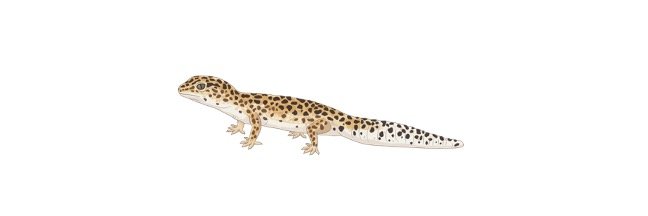Table of Contents
Dimetrodon
Dimetrodon is a early mammal-like reptile belongs to the genus Dimetrodon and Order Pelycosauria that lived 280-260 mya in the Permian period. These predatory carnivores were earlier grouped with dinosaurs due to their resemblance with them, but they are more closely related to mammals and they got extinct 40 million years before the dinosaurs. There are around 15 known species in this genus.
Dimetrodon Features
Dimetrodon genus displays many mammal-like features and is adapted to a range of habitats. Its fossils have been located around Oklahoma and Texas in the US, Canada, Nova Scotia, and around Europe as well.
The first fossil was discovered by Edward Drinker Cope during the 19th century. It is difficult to ascertain the habitat they preferred as Earth would have looked different then. Based on the places their fossils were found, these animals were adapt from arid dry regions to wetter areas like swamps.
This cold-blooded reptile walked on 4 limbs. It also possessed a large tail that contributed to the large proportion of its body length. With its large tail, it might have moved like present-day crocodiles. They were also sexually dimorphic with males being larger than females.
Dimetrodon had sharp large teeth that were adapted for carnivores, so scientists conclude they were meat-eaters, but could not ascertain their prey. They were egg-laying reptiles but no further information is available about their reproduction strategy.
Fun Facts about the Dimetrodon!
The Dimetrodon existed millions of years before dinosaurs evolved and they are mammal-like reptiles. Several adaptations employed by this organism have been found out by scientists that link them to mammals.
Thermoregulation: The large sail on the back of the Dimetrodon was one of its distinctive features. This sail was speculated to be a vascularized membrane that was employed for thermoregulation. It might have helped to absorb heat during the day and utilizing this heat to keep warm at night efficiently due to its surface area.
Employing this would make them more efficient in warming up and would become active sooner than another organism. This adaptation would help it to hunt for other sluggish organisms.
The sail might also have roles in warding off predators or in courtship rituals. This sail is also seen to have evolved independently in the Edaphosaurus which was also Peltcosaurs and a distant relative of the Dimetrodon.
Ziphodont Teeth: It is named for having 2 different types of teeth that include canine teeth and shearing teeth. They were the first terrestrial organisms to possess laterally compressed teeth that were sharp and had serrated edges known as ziphodont teeth.
The different species of the genus Dimetrodon had varied ziphodont teeth. The teeth of 3 species of Dimetrodon that existed during different times were examined.
Dimetrodon milleri was the smallest and oldest species and its teeth were straight and sharp with cutting edges. Dimetrodon limbastus was larger than the other species and had small serrations on the enamel of its teeth. It came later in evolution, and their teeth were much better suited to cutting the muscles and skin of the meat.
The final species Dimetrodon grandis had teeth that resembled teeth of predatory dinosaurs and they had prominent denticles that were specialized for cutting meat.
The trends in the evolution of specialized teeth suggest they were equipped to hunt various kinds of prey. The teeth might have evolved to widen their range of prey and also to help them hunt larger animals.
Are Humans Descended of Dimetrodon?
While these animals looked more like reptiles than mammals, they had certain characteristics that relate them to the earliest mammals and make them a distant relative of humans.
Dimetrodon skull possesses temporal fenestra which is a single large hole where the lower jaw muscles attach to the skull. This feature shows their similarity to synapsids that comprise modern mammals. Dinosaurs are diapsids as they have 2 holes in this region.
This suggested that even though they have some morphological similarities to dinosaurs they are distantly related to modern mammals. Synapsids and reptiles split from a common lizard-like ancestor 324 mya. Early synapsids might have resembled reptiles and later evolved.
Dimetrodon under synapsids belongs to the group sphenacodontians. What’s surprising is that this group also comprises another distant relative of modern mammals that has similar features to Dimetrodon.
Dimetrodon Citations
- Natural environment and thermal behaviour of Dimetrodon limbatus. J Therm Biol . 2001 Feb 1;26(1):15-20.
- Comparative anatomy and osteohistology of hyperelongate neural spines in the sphenacodontids Sphenacodon and Dimetrodon (Amniota: Synapsida). J Morphol . 2010 Dec;271(12):1407-21.
- Bone histology and microanatomy of Edaphosaurus and Dimetrodon (Amniota, Synapsida) vertebrae from the Lower Permian of Texas. Anat Rec (Hoboken) . 2021 Mar;304(3):570-583.
- Dimetrodon (Synapsida: Sphenacodontidae) from the cave system at Richards Spur, OK, USA, and a comparison of Early Permian-aged vertebrate paleoassemblages. Naturwissenschaften . 2019 Jan 4;106(1-2):2.
Share












